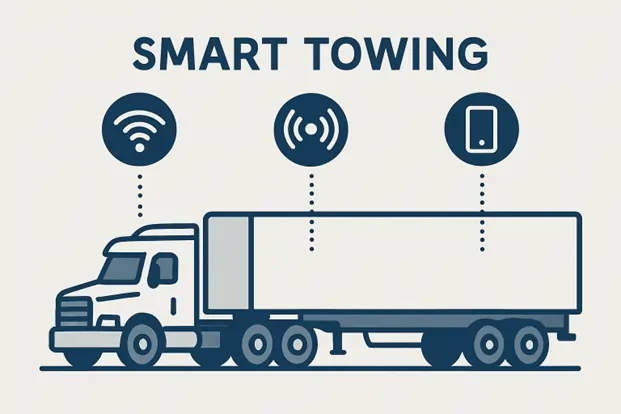How Smart Towing Practices Are Transforming Heavy-Duty Hauling
Redefining Heavy Hauling with Smart Practices
Heavy-duty hauling remains essential to a variety of industries, from agriculture to large-scale construction and logistics. With demands on safety and efficiency at an all-time high, smart towing practices are redefining what’s possible when moving massive loads. One critical component drivers rely on today for stability and secure towing is the gooseneck ball hitch. These specialized hitches provide a robust connection point for heavy loads, helping to distribute weight evenly and reduce the risk of incidents on the road.
The journey toward safer heavy-duty hauling doesn’t have to be daunting. With well-chosen equipment and up-to-date knowledge, drivers and fleet managers can simplify the complexities of towing. Streamlined practices and today’s innovative tools enable operators to focus less on potential risks and more on delivering reliable, consistent performance.
Why Weight Distribution Matters
Managing how a trailer’s weight is dispersed is foundational to towing safety. When loads are improperly balanced, even advanced towing equipment can fall short of preventing sway, fishtailing, or increased stress on both the tow vehicle and trailer connections. According to the National Highway Traffic Safety Administration (NHTSA), compromised weight distribution is a leading factor in trailer-related accidents, from rollovers to loss-of-control incidents. Utilizing equipment that offers built-in weight verification and following manufacturer guidelines allows every trip to start with confidence.
Weight distribution is about more than compliance—it’s about safety margins. A properly distributed load minimizes the chance of tire blowouts, brake overheating, or shifting cargo, each of which can have dangerous consequences for both the operator and other road users.
The Role of Technology in Modern Towing
Technological advancements have revolutionized towing operations, taking much of the guesswork out of hauling. Today’s smart hitch systems, wireless sensors, and load indicator devices provide real-time metrics on critical factors, including tongue weight, axle loading, and even tire pressure. Many fleet operators leverage digital payload calculators and integration with vehicle telematics systems to flag issues before they lead to problems on the highway.
By enabling operators to monitor loads digitally, technology enhances pre-trip inspections and informs in-the-moment decisions. This proactive approach offers benefits beyond immediate safety, such as reduced repair costs and longer-lasting equipment. Embracing connected solutions also streamlines compliance with industry standards and regulatory mandates.
Common Risks and Preventive Measures
Heavy-duty towing exposes drivers to a unique set of challenges. Tire failures, jackknifing dangers, brake fade, and unexpected equipment malfunctions are ever-present risks. To offset these threats, experienced operators use robust pre-trip checklists and adhere to speed limits, especially with heavier or more complex loads.
An often-overlooked but vital practice is maintaining trailers for balance and readiness. Routine inspections for tire wear, securing loose cargo, checking hitch integrity, and verifying electrical connectors all play critical roles. These habits are echoed by safety experts in publications like Consumer Reports, who emphasize that prevention is far preferable to emergency response.
Simple Steps for Safer Towing
- Always check the tow vehicle and trailer load ratings.
- Use a weight distribution hitch for heavy or uneven loads.
- Regularly inspect tires, brakes, and connectors before each trip.
- Keep speed moderate and allow for longer stopping distances.
- Leverage smart weighing systems to measure real axle loads in real time.
These straightforward steps can help even novice haulers avoid common missteps, build confidence, and develop habits that benefit safety and efficiency over the long term.
What Research Says About Hauling Safety
Multiple studies highlight the direct impact of technology-enabled practices on road safety. Fleets that proactively integrate load monitoring and advanced warning sensors have reported lower insurance claims and improved driver retention rates. The American Trucking Associations reports that fleets using real-time guidance systems and automated checklists see fewer accidents, underscoring the importance of continued investment in smart equipment.
Hauling safety is enhanced when organizations support their teams with both best-in-class hardware and the ongoing training needed to maximize its effectiveness, further strengthening industry-wide norms.
Industry Standards and Best Practices
Leading regulatory agencies and industry groups maintain clear guidelines for heavy-duty hauling, which form the foundation of responsible operations. Certification programs, manufacturer recommendations, and regular training sessions are critical for staying current. Real-world experience, combined with a commitment to shared improvement, allows operators to adopt proven techniques and avoid the pitfalls experienced by others.
Staying connected with the broader community—through industry bulletins, peer-sharing platforms, and participation in educational events—helps ensure ongoing improvement and can often reveal new, smarter ways to haul.
The Future of Smart Towing
Looking ahead, the next wave of innovation will deepen the role of connectivity and automation in hauling operations. The rapid expansion of IoT platforms, vehicle-to-vehicle communications, and predictive maintenance tools signals a future in which problems are identified proactively—often before a driver notices an issue. This shift will benefit not only operators but also the wider public by promoting safer highways and more efficient logistics infrastructure.
As the industry moves forward, commitment to education, investment in cutting-edge tools, and a culture of safety will remain the guiding principles that define success in smart, heavy-duty towing practices.
Read more: How Grounding Mats Help You Sleep Better and Restore Natural Balance – SizeCrafter
Why Laws That Protect Mental Health Patients Are Essential for Better Care – SizeCrafter
A Step-by-Step Guide to Getting the Best Dental Implants – SizeCrafter

